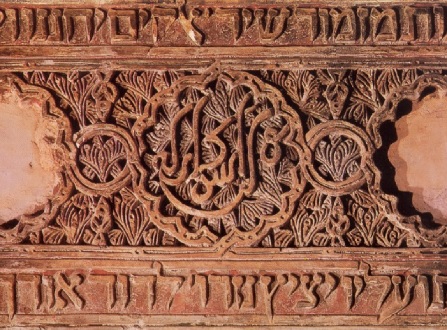The Jewish Expulsion From Spain and the Sephardic Diaspora
The expulsion of Jews from Spain in 1492 was a seminal event in Jewish history. The Alhambra Decree put an end to 1,500 glorious years of Jewish community life on Spanish soil, by ordering all Jews who refused to convert to Christianity to leave the realm.
Jews likely began settling on the Iberian Peninsula at the start of the first millennium of the Common Era. Over the centuries, local Jews experienced many changes and shifts in overlords and ruling entities. The Muslims conquered the region in the 8th century. Christian forces soon began a long series of military campaigns to regain the lost territories, an effort that was finally successful in 1492 and which came to be known as the Reconquista. During these centuries of Muslim rule, the local Jewish community flourished. Many of its members assumed senior official positions, while others became prominent sages, biblical commentators, poets, scientists and thinkers. Their outstanding cultural, spiritual and scientific contributions shaped what is often described as the "Golden Age" of Spanish Jewry.
However, with the Christian military advances, the standing of the Jewish community began to deteriorate. Not only were its members forced to convert to Christianity, they were also tainted by blood libels – falsely accused of murdering Christians for Jewish rituals. Jews were persecuted, attacked and sentenced to harsh punishments. Many fled Spain after the Massacre of 1391, a wave of antisemitic pogroms. Some of those who remained agreed to convert to Christianity, while others were forced into conversion. These forced converts were referred to as Anusim ("coerced" in Hebrew) or "New Christians". When the authorities suspected that practicing Jews were encouraging the New Christians to continue observing Jewish law in secret, they decided to segregate the two groups. Thus, Jews were expelled from their homes and moved into separate neighborhoods. In 1481, the Spanish Inquisition began brutally persecuting the Anusim and in 1483, a deportation order was issued for the Jews of Andalusia. In 1492, the Catholic monarchs were finally able to complete the Spanish Reconquista, shifting their focus to thwarting Jewish influence on the Anusim.
The Alhambra Decree
On March 31st, 1492, the joint Catholic monarchs of Spain, Ferdinand II of Aragon, and Isabella I of Castile, issued an edict of expulsion for the Jews of Spain. All Jews refusing to convert were to leave by the end of July and never return. The objective was to separate practicing Jews from the New Christians to ensure that the latter would not revert to Judaism. Those who violated the order would be sentenced to death, including anyone that sheltered the deportees. In response, thousands of Jews converted to Christianity to avoid expulsion, even though it was just a facade for some. The number of expelled Jews is unknown, but most of the community, estimated at tens of thousands, settled in neighboring Portugal. Others journeyed to the Kingdom of Navarre. Thousands, suffering great tribulations, made their way to North Africa, the Ottoman Empire, Italy, and France. Those that settled in Portugal once again faced an expulsion decree in 1497, this time issued for the Jews of Portugal. A few months later, the order was modified to coerce Jews to convert to Christianity by forced baptism. Shortly after, in 1498, those that settled in the Kingdom of Navarre in Spain were also deported.





